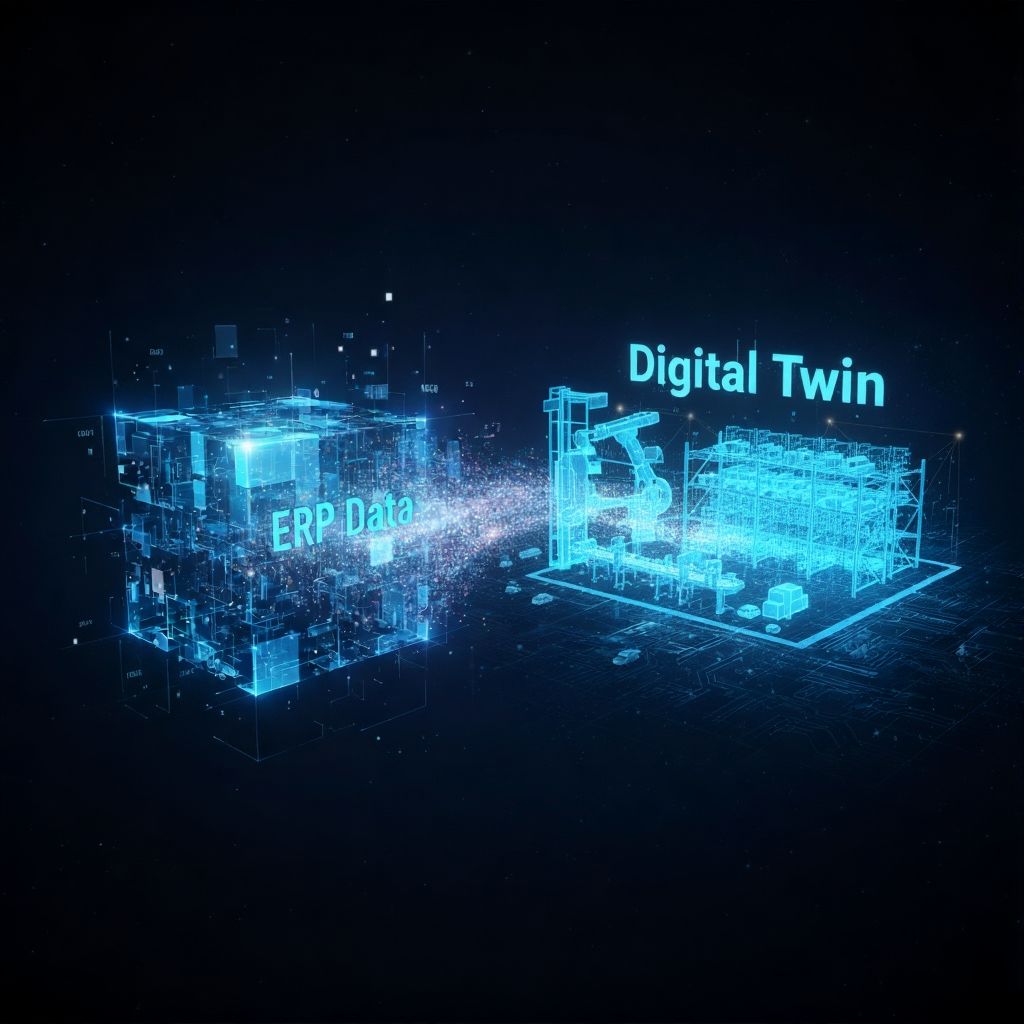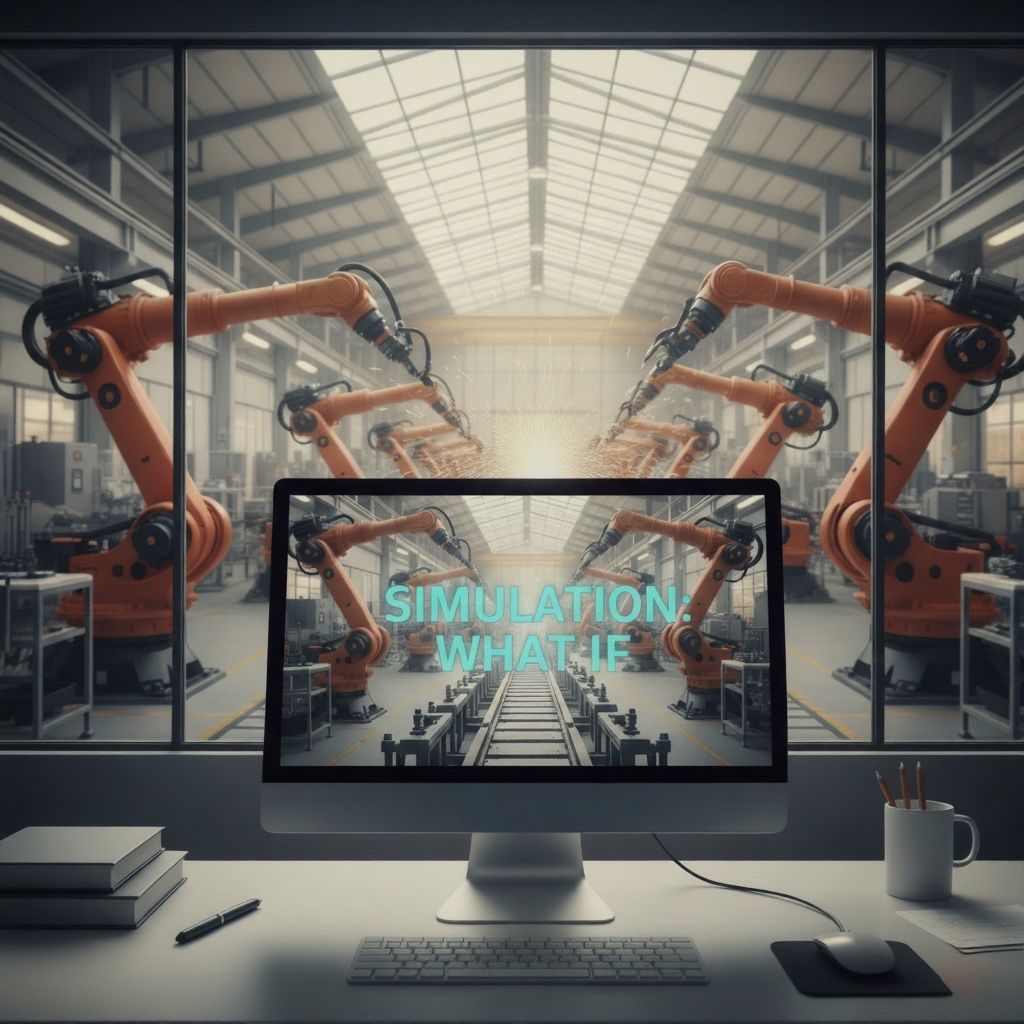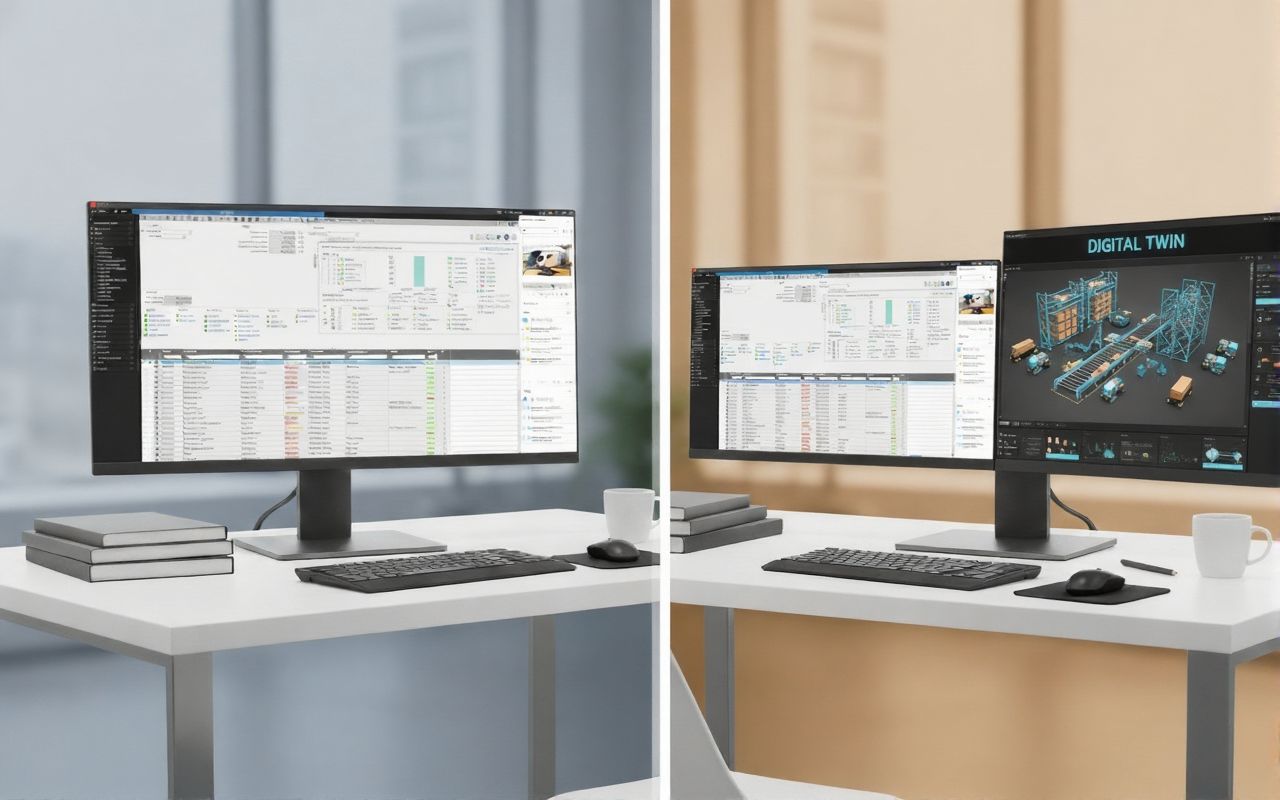Your ERP Shows What Happened. A Digital Twin Shows What’s Next

We have traditionally viewed our ERP as the ultimate system of record—a detailed chronicle of every transaction and inventory movement. It is the undisputed source of truth for what has happened. In a stable world, this rear-view mirror was enough to navigate. But in today’s landscape of constant disruption, looking back is no longer a viable strategy for moving forward.
The critical question has changed. It’s no longer just “What were our sales last month?” but “What will be the impact on our entire production schedule if our key supplier’s shipment is delayed by one week?”
Your ERP alone cannot answer that question: a Digital Twin can.

From Reactive Data to a Proactive, Virtual World
A Digital Twin is a dynamic, virtual replica of your factories, warehouses, suppliers, logistics routes, and inventory. It is powered by the live, real-time data flowing directly from your ERP.
Making the Connection: From LN Data to a Live Model
But how is this live connection technically achieved? The Infor cloud ecosystem, for example, provides two primary methods to feed the Digital Twin with the data it needs:
- The Infor Data Lake for Bulk Synchronization: Infor LN continuously publishes data changes to the Infor Data Lake. The Digital Twin platform can read data, consuming vast amounts of information—from item master data and bills of material to current inventory levels and production orders. This is the foundational layer, ensuring the virtual model is a complete and accurate replica of the physical world.
- ION APIs for Real-Time Events: For critical, time-sensitive events, we leverage Infor ION. For instance, when a high-priority sales order is confirmed or a production order is completed, a business event can be triggered within LN. This event is sent via ION as a BOD (Business Object Document) or a direct API call to the Digital Twin, ensuring the virtual model reacts instantly to the most crucial changes.
By using tools like data lake and ION properly, we can create a robust data pipeline that keeps the Digital Twin perfectly synchronized with the reality of your operations.
Think of it this way:
- Infor LN provides the accurate, up-to-the-minute status of every component: current inventory levels, active purchase orders, confirmed sales orders, and production schedules.
- The Digital Twin takes this live data and builds an interactive, operational model upon it.
This transforms your ERP from a passive repository of historical facts into the fuel for a proactive, strategic engine.

The Power of “What-If”: The Ultimate Strategic Advantage
Once your virtual supply chain is mirroring your physical one, you unlock the ability to simulate the future. You can stress-test your operations against potential disruptions without any real-world risk. This is the power of what-if scenario planning.
Consider these common challenges in manufacturing:
- “What if a key supplier’s factory shuts down for two weeks?” The Digital Twin instantly simulates the ripple effect: which production lines will halt, which customer orders will be delayed, and what the financial impact will be.
- “What if a shipping port becomes congested, adding 10 days of lead time?” The model can identify alternative routes or suggest which inventory to reallocate to mitigate the impact.
- “What if a major customer suddenly doubles their order?” You can simulate the strain on your production capacity and material availability to see if you can commit to the new demand without jeopardizing existing orders.
A Look at the Market: Two Paths to a Digital Twin
The ERP market is embracing this trend via a dual-track approach. On one hand, major vendors are embedding “Digital Twin-like” capabilities into their suites, primarily focused on creating high-level “control towers” for supply chain visibility. Infor’s own Nexus platform is a prime example of this, providing real-time visibility and collaboration across global logistics networks.
On the other hand, for high-fidelity, granular simulation—modeling the precise physics of a factory floor or the complex behavior of a logistics network—the industry standard remains the integration of the ERP with specialized simulation platforms like AnyLogic. These are the engines that run the most complex “what-if” scenarios.
The strength of the Infor ecosystem lies in its ability to power both approaches. By providing open and robust connectivity through the Data Lake and ION APIs, it serves as the ideal data foundation, allowing companies to either leverage built-in visibility tools or connect seamlessly with the most powerful, best-of-breed simulation engines on the market.

Moving to Future-Proofing
This marks a fundamental shift in how we manage our supply chains.
- The Old Way (ERP alone): You discover a critical component shortage when the production line stops. The response is reactive: expediting shipments, paying premiums, and firefighting to minimize the damage.
- The Tomorrow Way (ERP + Digital Twin): You are alerted to a potential future shortage based on a supplier delay. The response is proactive: you simulate different solutions, adjust the production plan, reallocate resources, and make strategic decisions from a position of control.
The ERP remains your source of truth. But by feeding that truth into a Digital Twin, you are no longer just recording history. You are building a truly resilient enterprise, one that doesn’t just survive disruption, but anticipates and navigates it.
Written by Andrea Guaccio
October 8, 2025